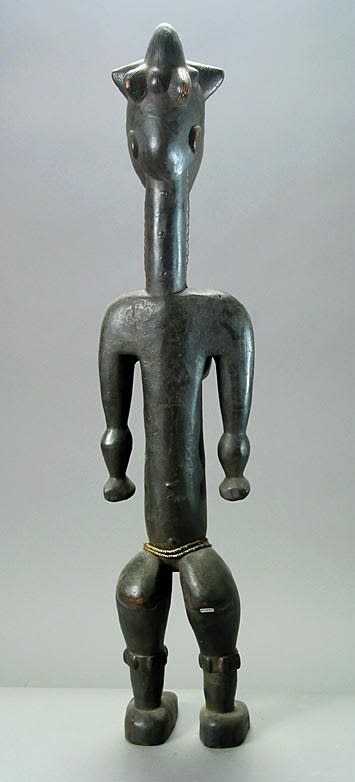Kulango Wood Sculpture of a Standing Woman, 20th Century CE
Wood
7 x 34
X.1006
Further images
This figure is a splendid example of the uncommon Kulango statuary. The figure bears the rounded, ovular facial contour with a pointed chin characteristic of Kulango art while the figure’s...
This figure is a splendid example of the uncommon Kulango statuary. The figure bears the rounded, ovular facial contour with a pointed chin characteristic of Kulango art while the figure’s posture and execution reveals the influence of their neighboring tribes including the Akan and the Baule. The woman stands with her legs apart, knees slightly bent, and rests her hands along side her body. This stance is related to similar Baule sculptures and can also be seen in the famous Ashanti Akua’ba fertility dolls rendered in the later representational style. Her segmented, bulbous arms and hands are also typical of Kulango works. Perhaps the most striking feature of this gorgeous woman is the fantastic keloid scarification that covers her face, neck, and body. Such scarification was considered to be both marks of beauty as well as prestige. Certain scars, like the line running across the sides of her neck, would have identified this woman as belonging to the Kulango tribe. Her elaborate coiffure has been styled into a central crest surrounded by conical nodules. Considering the time involved in braiding and arranging such a hairstyle, such coiffures indicate that she belongs to the elite class, for laborers did not have enough time to pamper themselves. Based on her large elongated breasts and prominent buttocks, it is clear that she is a fertility figure representing the epitome of female beauty as interpreted by the Kulango tribe.







